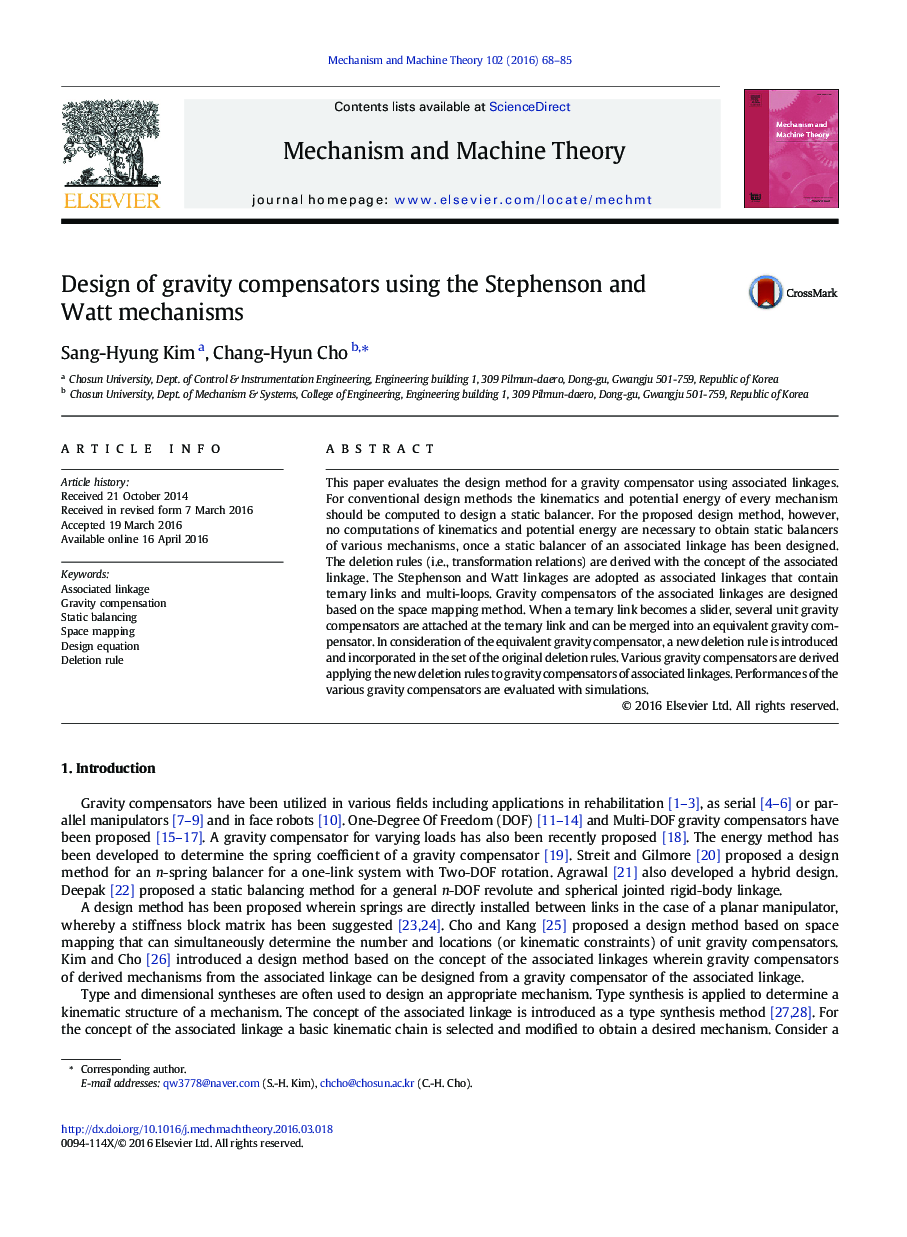| Article ID | Journal | Published Year | Pages | File Type |
|---|---|---|---|---|
| 7179726 | Mechanism and Machine Theory | 2016 | 18 Pages |
Abstract
This paper evaluates the design method for a gravity compensator using associated linkages. For conventional design methods the kinematics and potential energy of every mechanism should be computed to design a static balancer. For the proposed design method, however, no computations of kinematics and potential energy are necessary to obtain static balancers of various mechanisms, once a static balancer of an associated linkage has been designed. The deletion rules (i.e., transformation relations) are derived with the concept of the associated linkage. The Stephenson and Watt linkages are adopted as associated linkages that contain ternary links and multi-loops. Gravity compensators of the associated linkages are designed based on the space mapping method. When a ternary link becomes a slider, several unit gravity compensators are attached at the ternary link and can be merged into an equivalent gravity compensator. In consideration of the equivalent gravity compensator, a new deletion rule is introduced and incorporated in the set of the original deletion rules. Various gravity compensators are derived applying the new deletion rules to gravity compensators of associated linkages. Performances of the various gravity compensators are evaluated with simulations.
Related Topics
Physical Sciences and Engineering
Engineering
Industrial and Manufacturing Engineering
Authors
Sang-Hyung Kim, Chang-Hyun Cho,
